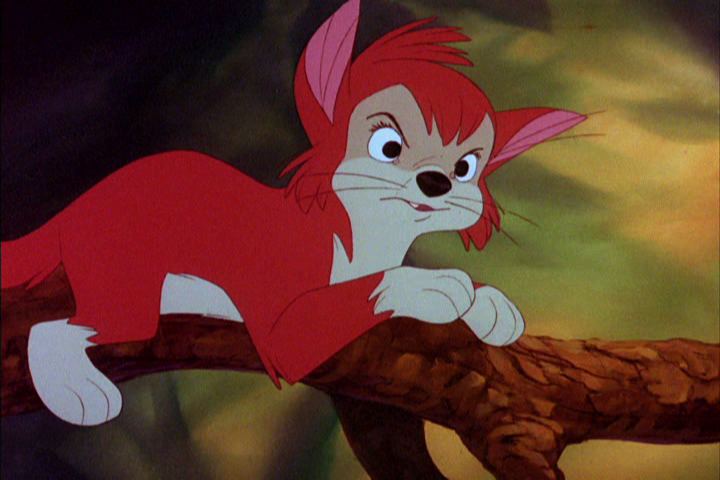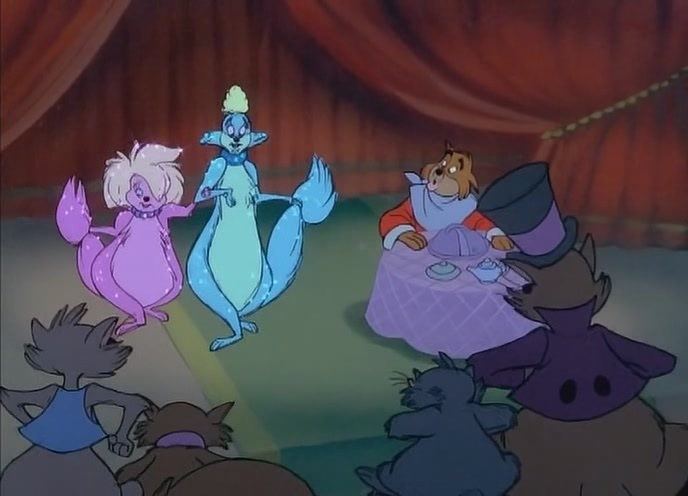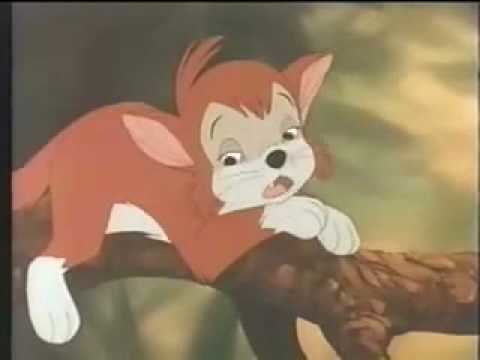Banjo the Woodpile Cat
8 /10 1 Votes
Duration Language English | Country United States | |||||||||||||||||||||||||||||||||
 | ||||||||||||||||||||||||||||||||||
Release date November 16, 1979 | ||||||||||||||||||||||||||||||||||
Banjo the Woodpile Cat is a 1979 animated short film directed by Don Bluth. It follows the story of Banjo, an overly curious and rebellious kitten who, after getting into trouble for falling from a house to see if he could land on his feet, runs away from his woodpile home in his owners' farm in Payson, Utah by catching a truck to Salt Lake City. Produced in a shoestring budget, and created in Bluth's garage, the film took four years to make and it was the first production of Don Bluth Productions, later Sullivan Bluth Studios. It had a short theatrical run from December 21 to 28, 1979 at the Egyptian Theatre in Hollywood and the Peppertree Cinema in Northridge as an opening short for the holiday re-release of The Muppet Movie, but did not appear on network television until 1982.
Contents

Plot

In a woodpile in Payson, Utah during the 1940s, a kitten named Banjo decides to chase chickens around until his father eventually stops him and makes him promise not to do it again, though Banjo continues to be mischievous in many ways. After getting in trouble for jumping off the roof of a chicken coop, Banjo decides to run away from home and hitches a ride on a feed truck to Salt Lake City.
In the city, Banjo finds plenty of excitement, followed by a series of danger. When it begins to rain, he finds shelter in a small can in an alley while thinking about his family and how much he misses them. Later, a cat named Crazy Legs discovers Banjo in the can. They strike up a friendship when Crazy Legs tells Banjo that he can go back the same way he got here. During their search, Crazy Legs and Banjo come to a night club and enlist the help of a singing cat trio, as well as other cats to look for the truck. Later that night, while searching for the truck, Banjo and Crazy Legs run into a group of dogs who end up chasing them. After a lengthy chase, the pair escape and drive the dogs away by climbing up a series of boxes. The pair arrive at the singing cats' home and get some rest.

The next morning, Banjo wakes up and hears the driver of the truck out in the street. After some rejoice and many goodbyes, Banjo gets on board and eventually reunites with his family back in Payson.
Production

This film was started as a side project, while Don Bluth was still working at Disney. Bluth had previously considered producing a short film of The Pied Piper but felt it was too large a production. He invited several other young animators to his house on nights and weekends to discover secrets of classical animation that he felt had been lost at Disney. The team worked in Bluth's garage. Bluth, and animators such as Gary Goldman, felt that Disney were only attempting to reduce the cost of films without paying attention to any artistic values. Eventually he resigned from Disney, along with 17 other animators, to finish this film and begin The Secret of NIMH. That bold walk-out caused a delay in the release of Disney's The Fox and the Hound that was in mid-production at the time. The story is partially based on one of Don Bluth's real-life experiences: While living on a farm, his family's cat, who lived in a woodpile nearby, disappeared, only to return to the farm several weeks later.
During the filming stage, it was considered to become a feature-length film. It included a fleshed-out villain: a scarred, cigar-smoking cat named Rocko, who bears similarities to Warren T. Rat (from An American Tail) and Carface (from All Dogs Go to Heaven). A termite that saves Banjo from a group of young children in Salt Lake City later became Digit in An American Tail. The tone of the film was darker and more akin to All Dogs Go to Heaven, and the climatic battle between Crazy Legs and Rocko was inspired by Disney's The Jungle Book. However, it was found that padding the film and adding darker elements did not strengthen the storyline, so the filmmakers kept the film as a short.
It was considered to be made into a Christmas special and would have featured live-action scenes of Sparky Marcus talking to Santa Claus, and the animation would have more of a Christmas theme. Don Bluth recalled, "We forced Christmas into it, and it didn't work." However, Crazy Legs briefly wearing the Santa Claus suit, the wintry landscapes, and decorations, are still evident in the final film.
Don Bluth pitched this film, during pre-production, to then-studio head Ron W. Miller, as a future property for Disney. Seeing no value in it, Miller turned it down.
The rain and snow effects seen in this movie are re-used live-action passes, thrown away by the Disney studio, in favor of cheaper and faster techniques.
Although there has been interest in a revival of the film and characters, including a sequel Banjo Meets the King of the Goblins, Bluth has stated he wishes to leave the film behind.
Spinoffs
On March 11, 2009, a Dragon's Lair-esque version of the film under the name Banjo the Woodpile Cat Adventure Game was developed and released on the iPhone and iPod Touch by Iconic Apps.
